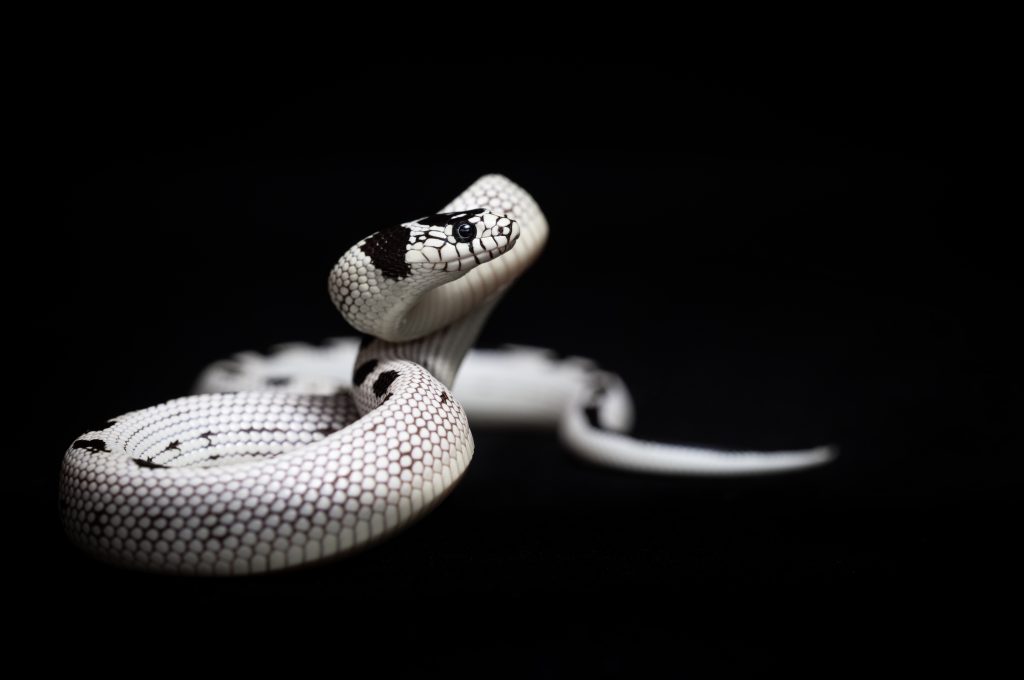California King Snake size is an important factor if you’re considering getting one. As your about to find out though, they are a very manageable species…
Last updated on February 1st, 2023 at 09:27 am
The California kingsnake is a nonvenomous colubrid snake found in a variety of environments in the southwestern USA and northern Mexico. It is considered one of the most popular snakes in captivity due to its simplicity of maintenance and a vast variety of color variations.
The California kingsnake is typically 2.5 to 3.5 feet (76 – 107 cm) long, although they can grow to be much larger. Individuals in Baja California, Islas Angel de la Guarda, Mexico, have been observed growing to 78 inches (2 m).
In the wild, a broad variety of color variants of king snake exists. They are typically seen with consecutive light and dark bands spanning in hue from white and black to cream and brown. Some groups have longitudinal stripes rather than bands.
Because of its ease of caring, appealing look, and gentle nature, the California kingsnake is among the most popular snakes for beginners. Snake aficionados have carefully bred for a range of color patterns known as “morphs” due to natural color and pattern variations amongst individual snakes.
The California kingsnake is a cathemeral snake that can be active at any time of day or night, depending on the weather. During winter months, they burrow beneath debris or dirt and undergo a hibernation-like state known as brumation.
California kingsnake size female
The average female snakes grow to be between three and four feet long as an adult. California kingsnakes resemble one another, while adult females are bigger than males. Occasionally, females can be as much as 12 inches longer than males.
When females are ready to mate, they shed their skins all over the cage to attract males with their aroma. During the mating season, females grow voracious and can’t seem to obtain enough food.
This female kingsnake’s courtship occurs in the spring, generally following their hibernation or initial shedding from 2 to 4 years and till their late teens. The female California kingsnake is an oviparous internal fertilization animal, which means it lays eggs rather than giving birth live, as some other snakes do.

How long does it take for a California kingsnake to reach full size?
They may develop fast due to their excellent feeding response, and they normally reach adulthood in around three years. A 4-foot-long adult ought to feel at ease in an enclosure 3 feet long by 1 feet broad by 1 foot tall.
California Kingsnakes are reasonably big and slender, sometimes reaching lengths of 4 – 5 feet (1.3 – 15. m). Most California kings attain maturity between the ages of three and four.
Baby California King Snakes hatch around a foot long and reach adulthood between the ages of two to four, which is reasonably large compared to many other subspecies.
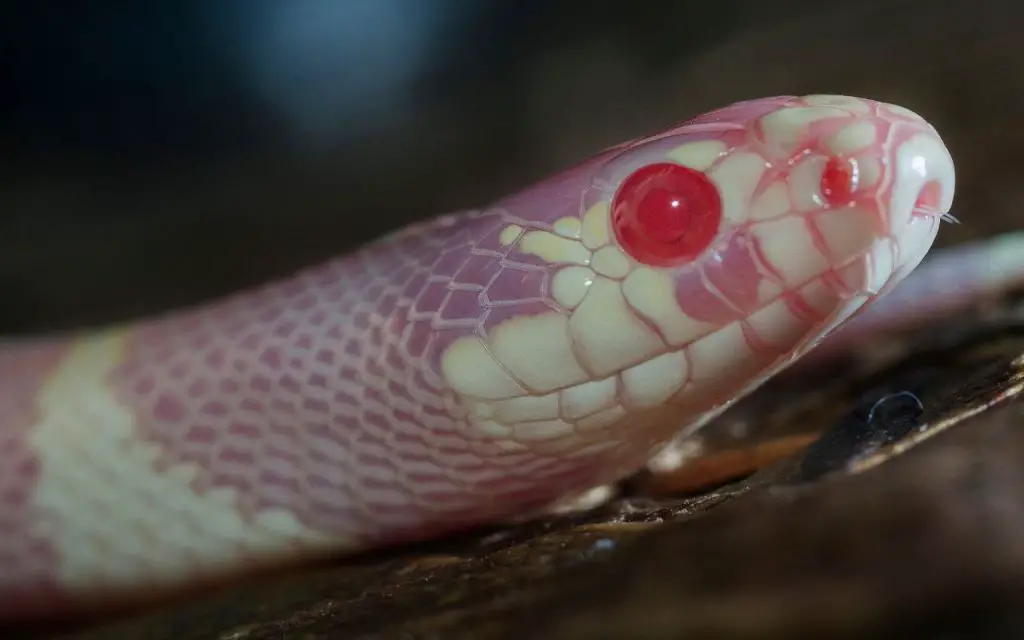
California kingsnake size male
As babies, California kingsnakes are around 12 inches long. They will increase in length in their initial year and then double once more in the following year.
A 13-inch snake will be about 26 inches at one year and 36-40 inches at two years old. Male kingsize snakes typically grow to be 90-107 cm long (3.0–3.5 ft). These snakes rarely reach 3.5 feet in length and have an average of 3 feet.
California kingsnake tank size
California kingsnake babies may be raised in containers as little as 10 gallons, you can raise the size after about a year. PVC tanks or one of the commonly available polycarbonate reptile enclosures are suitable for kingsnakes.
You can also use plastic tubs, or even glass tanks. Overall, it doesn’t matter too much, given how hardy this subspecies is.
For year-old snakes, you can use an enclosure that measures at least 30″ x 12″ inches (20 gals) or the adult enclosure size. Adults thrive in tanks at least 36″ x 18″ in size (40 gals).
Adult California kingsnakes require a minimum of a 20-gallon terrarium. As many snakes tend to look for holes in their cages to escape, make sure the terrarium shuts and locks securely.
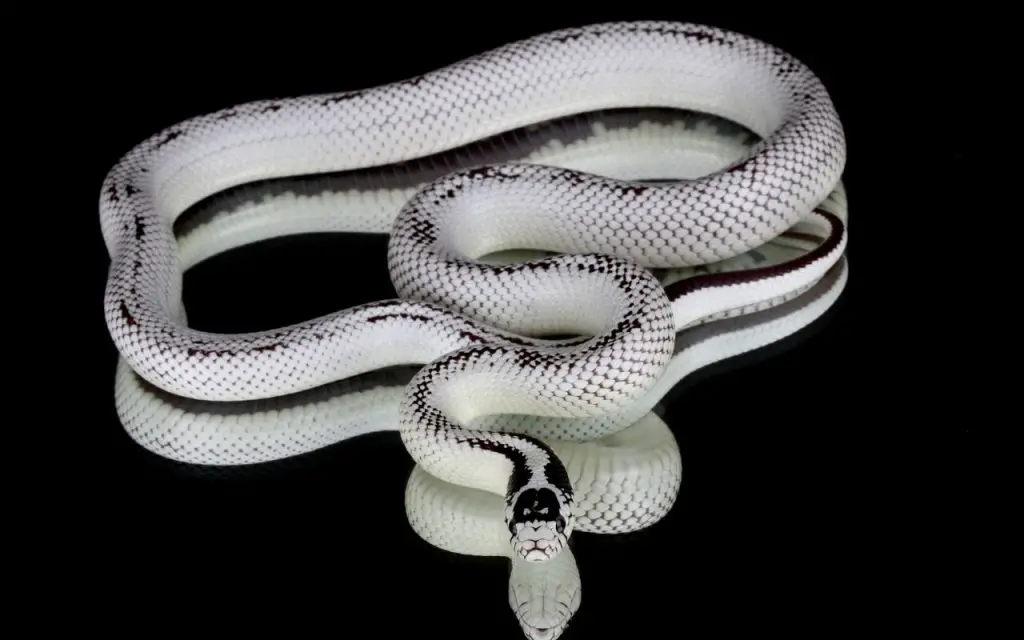
California kingsnake temperature
California Kings are native to the western United States and thus like moderate temperatures, however, they must be allowed to cool off if necessary. They, like other reptiles, depend on external temperature regulation to regulate their body temperature.
This effectively implies that your enclosure must have both a heated and a cold side. All of the lighting and heating equipment should be on one side, with the cooler side on the other, as a result, your snake may alternate between different temperatures based on its demands.
The hot side resting area should be between 88 and 90 degrees fahrenheit. The cool side might range from 75 to 80 degrees. At night, the temperature can dip as low as 75, but not below 70.
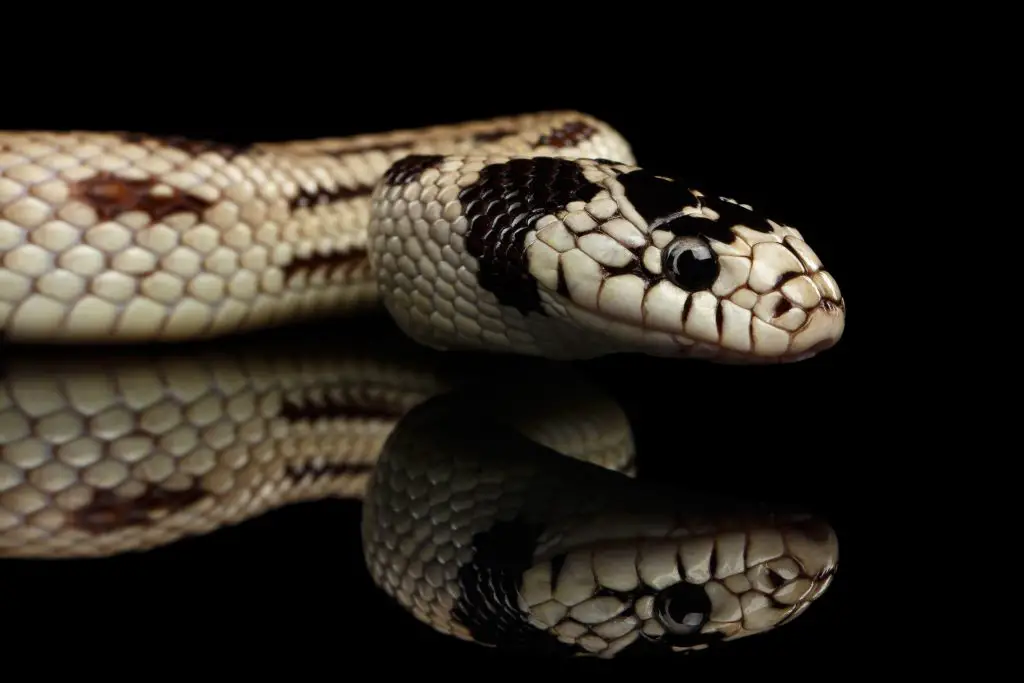
Do kingsnakes need a heat mat?
If you house your King Snake in either a plastic tub, or a glass tank, then a heat mat is the cheapest and safest option for keeping them warm.
A heating pad or mat is used to provide an optimal warm spot temperature of 88 to 90 degrees fahrenheit. These emit heat but do not emit light, making them an ideal 24hr heat source.
A decent-grade thermostat should always be used to manage the heat mat. These can be either on/off (often called “mat stats” or “mini stats”), or pulse-proportional. When the temperature in the terrarium decreases, the thermostat will activate the mat, keeping your snake comfortable at all times. Daily temperature monitoring with a thermometer is also recommended.
If, on the other hand, you’re using a polycarbonate, PVC or melamine vivarium, then a heat lamp or ceramic heat emitter will be required for a kingsnake instead of a heat mat.
If you do decide to go for this option, remember that any heat lamp must always be installed inside a guard, which you can buy with it. For their part, heat lamps must be used with a dimming thermostat, whereas heat emitters should be used with a pulse-proportional one.
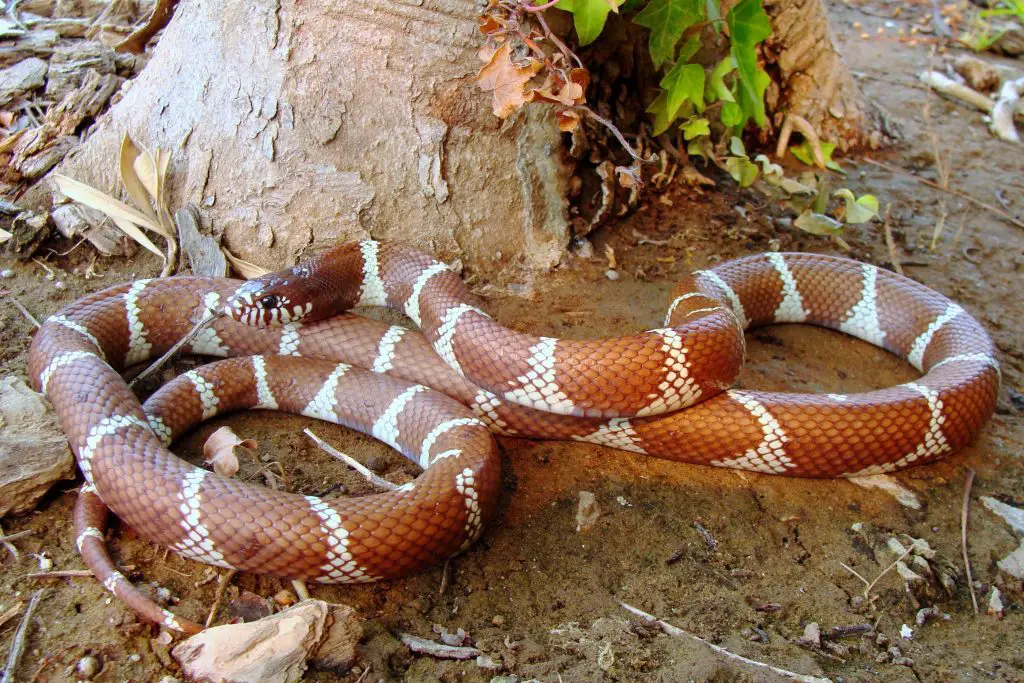
California kingsnake price
- Most wild species of California kingsnake will cost less than $80.
- Albino snakes will cost approximately $100.
- While high-white snakes will cost around $200.
- Based on the age and gender of the snake, older snakes often sell for more than $200 and can reach upwards of $600 based on the snake’s genes.
California kingsnake poisonous
California Kingsnakes are neither venomous or poisonous. As they use constriction to kill their prey, they have no need for venom.
Whilst they do eat venomous snakes as part of their wild diet, they are unable to use the venom of their meals to make themselves poisonous.
So far, the only snakes that are proven to be poisonous when eaten are the Keelback snakes (Rhabdophis), who eat toads and accumulate the toad poison in their own bloodstream.
*Remember: venomous = an animal that can inject toxins through a bite or scratch. Poisonous = an animal that releases toxins when eaten.
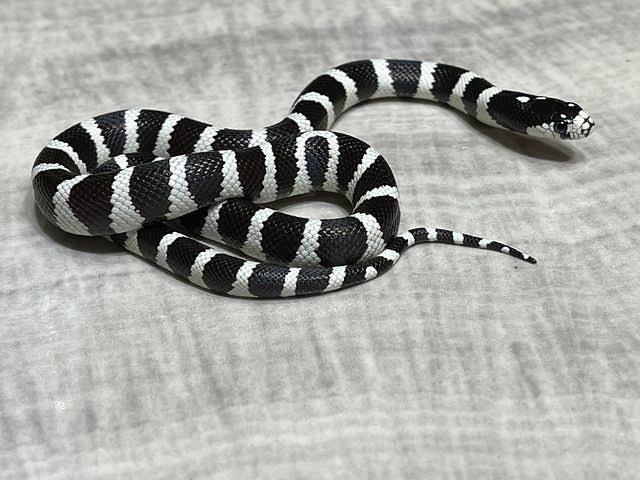
Do king snakes hunt rattlesnakes?
Kingsnakes are experts at hunting other snakes, which includes their type. They may even eat rattlesnakes and seem to be immune to rattlesnake poison.
Kingsnakes are immune to pit viper poison and have been observed eating copperheads, cottonmouths, and rattlesnakes. They often attack and grab snake prey around the head before wrapping around, restricting, and eating the snake headfirst.
Temperament
California Kingsnakes make excellent pets since they are calm and have distinct personalities if properly raised. While they are placid around people, they are aggressive against other reptiles and snakes and should never be kept in the same cage as other snakes.
These snakes are mostly diurnal when temperatures are moderate, which means they are active throughout the day. When it’s hot out, however, they become nocturnal, which means they are active at night.
This is just one example of how California Kingsnakes are very adaptable to their surroundings. They are not aggressive and are pretty peaceful. They actually seem to have the laid-back attitude southern California is famous for!
In some areas, they even seem to thrive in suburban neighborhoods, cruising through backyards and hunting for rodents without ever bothering anyone.

Do kingsnake bites hurt?
Kingsnake bites, just like many other non-venomous snake bites, can produce minor discomfort and edema around the bite site. The bite wounds may take a while to heal, but it will not create any difficulties, therefore anyone bit by a kingsnake need not be concerned. All you need to do is wash the bite with soap and water.
Do California kingsnakes make good pets?
Among the most popular pet reptiles is the California Kingsnake. They are calm, simple to care for, and inexpensive. Also, they take readily to eating frozen-thawed mice, despite the fact that they eat a lot of reptiles in the wild.
California kingsnakes are among the most popular pet snakes for good reason. Meeting kingsnake captive needs is simple when reptile health and well-being, competent husbandry, and appropriate snake supplies are prioritized.
Having an easily adaptable snake may be beneficial when attempting to acclimate it to its new home, especially shortly after you adopt it.
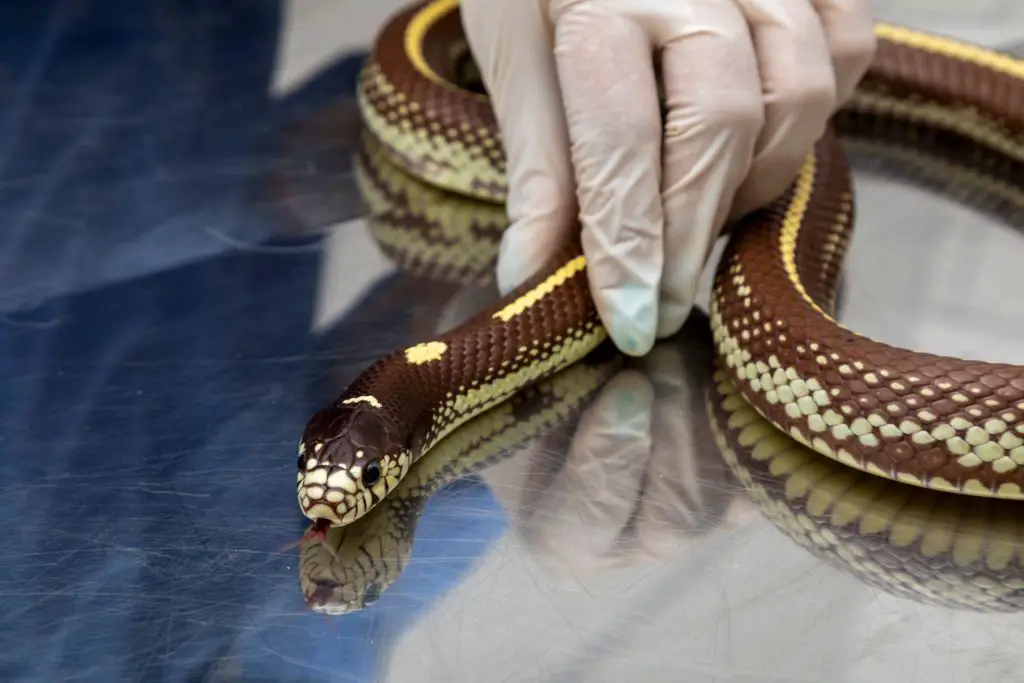
FAQ relating to California King Snake size
Are California kingsnakes aggressive?
They are normally not aggressive until provoked. They are unfriendly to other reptiles and snakes, but harmless to humans. They shouldn’t be kept in the same enclosure as other snakes.
These snakes are known to cannibalize and devour their species as well as other snakes. The only occasion two Cali Kings should come into touch with each other (briefly) should be during the breeding season.
Do California kingsnakes like to be held?
They are typically friendly and simple to handle. Just be sure to move slowly and support your snake’s body when handling it.
When a kingsnake knows that you are not going harm it, he or she typically appears to like, or at least be indefferent to handling. Relax and let your snake take some time to adjust to you.
Avoid coming in contact with the top of its head if your snake is new. Brushing the top of the head may frighten it and force it to pull away quickly except if it knows and likes you.
This reaction is known as being “head shy,” and it scares many new snake owners. Most kings will get over this fear response with gentle handling once or twice a week.
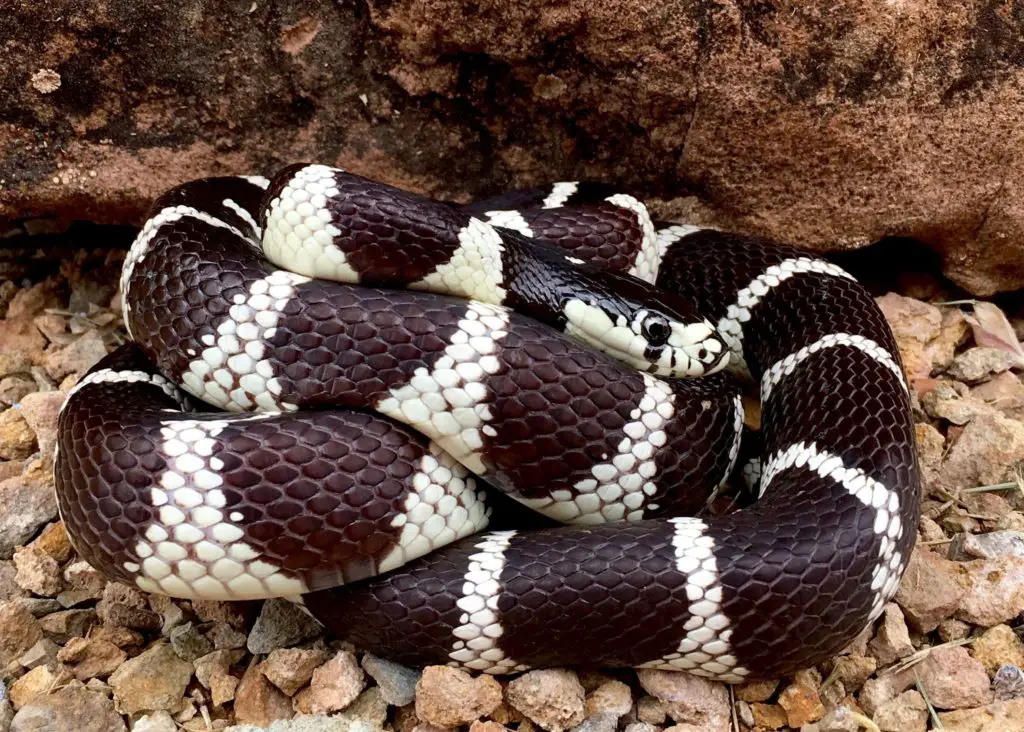
Do California kingsnakes make good pets?
California kingsnakes are excellent pets. The range of colors and patterns found in kings is stunning, ranging between striped dark brown or black, white or yellow. They are typically friendly and simple to look after.
Do California kingsnakes bite humans?
A threatened, kingsnake will hiss, shake its tail, or strike. It may also coil into a ball with its head in the center, emitting a foul stench from its vents.
They are not poisonous nor aggressive, although they may bite if they are startled or threatened.

